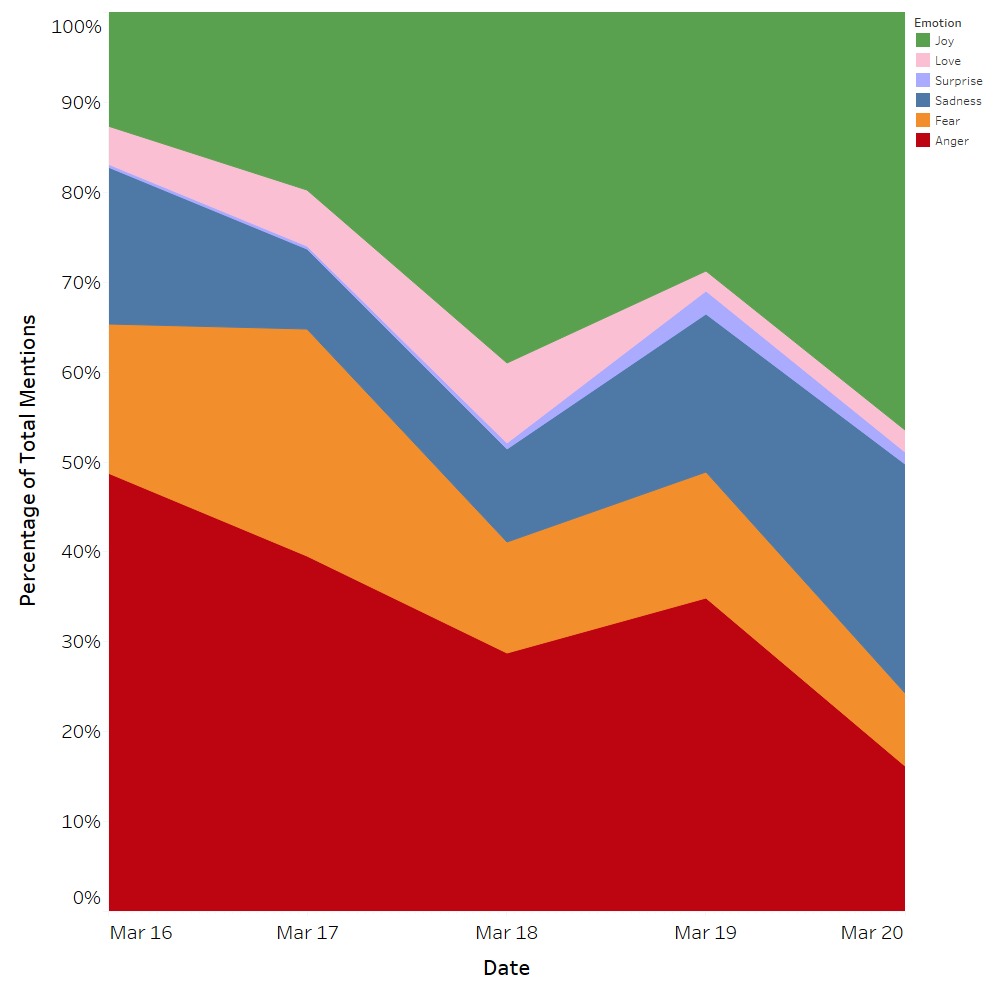
This article is co-authored by Dr. Helmy Haja Mydin (Co-founder of Asthma Malaysia and a respiratory physician based at Pantai Hospital Kuala Lumpur)
A global survey report published in April 2020 found that COVID-19 is affecting mental health – with 32% of people polled reporting that worry and stress about the virus had a negative impact on their mental health. Two weeks later in late March, this number had risen to 45%.
A new research by Fetzer et al from the University of Warwick and Oxford discovered a rapid increase in economic anxiety during and after the initial global spreading COVID-19, inferred through daily Google search activity.
This begs the question: How do Malaysians manage their mental health during this global pandemic against a backdrop of economic uncertainties and the Movement Control Order (MCO)?
It has been more than 25 days since the first phase of MCO was implemented. Surely being in a state of lockdown has shaped our emotions, behaviours and actions differently?
Our earlier sentiment analysis on COVID-19 discovered hints of growing anger among Malaysians. But can data science provide more insights by tracking emotion changes from social media platforms over a longer period? Our team performed an independent study to investigate this trend further.
The state of mental health includes our emotional, psychological, and social well-being. It affects how we think, feel, and act – and defines the manner in which we manage stress and the choices that we make.
Most people experience feelings of anxiety or low mood at times.
Studies have shown that stressors such as the death of a loved one, job loss, divorce and illness can lead to feelings of sadness, worry, frustration, and loneliness.
More often than not, these feelings are often difficult to measure as it may not be easily diagnosed by doctors and specialists.
Unfortunately, COVID-19 now appears to be the ultimate stressor. In fact, some experts are expecting the next pandemic to be a ‘mental health pandemic’ as there is a belief that COVID-19 will lead to greater levels of anxiety and depression across the globe.
But first, can we measure emotions?
Measuring Emotions from Social Media Data
There are several ways to measure emotions. The common approach is to measure six primary emotions (Fear, Anger, Surprise, Sadness, Joy, Love) – a framework developed by Dr. Paul Ekman, a famous American psychologist from the early 1970s. Here are the primary emotions and the supporting secondary emotions. Some of these terms will be used throughout this article to describe our findings.
Love
Secondary Emotions:
Affection, Lust, Longing
Joy
Secondary Emotions:
Zest, Contentment, Pride, Optimism, Relief
Surprise
Secondary Emotions:
Surprise, Shock
Anger
Secondary Emotions:
Irritation, Exasperation, Rage, Disgust, Envy
Sadness
Secondary Emotions:
Suffering, Disappointment, Shame, Neglect
Fear
Secondary Emotions:
Horror, Nervousness
Emotion analytics is a branch of data analytics which analyses unstructured data such as text data found in social media posts. We conducted a study using EMOROBO® which analyses emotions found in social data. It is able to detect text in various languages, including variations of slangs.
More than 223,897 social media data were used to analyse the emotions from eight social media and digital media platforms during the COVID-19 MCO between 16th March to 20th March 2020.
Here is what we found:

Figure 1: Emotion analytics output based on six primary emotions (Joy, Love, Surprise, Sadness, Fear and Anger). Data showed hourly posts by social media users across eight different digital and social platforms (n=223,897). Data cleaning was performed to remove posts or tweets which did not contain any keywords related to the six primary emotions.
Reduction of Anger and Fear

Figure 2: Emotion analytics output based on six primary emotions (Joy, Love, Surprise, Sadness, Fear and Anger). Data showed daily posts by social media users across eight different digital and social platforms (n=223,897). Data cleaning was performed to remove posts or tweets which did not contain any keywords related to the six primary emotions.
Here is the emotion breakdown on Day 1 (after the MCO announcement was made) vs Day 5.
Day 1
After MCO Announcement
Day 5
After MCO Announcement
Figure 3: Emotion analytics output based on six primary emotions (Joy, Love, Surprise, Sadness, Fear and Anger) on the first day when Movement Control Order (MCO) was announced compared to the 5th day during the MCO period. Data collected from 16th March to 20th March 2020. (n=223,897).
Insights
Our insights revealed some interesting discoveries during the first five days of the MCO.
- Anger and Fear recorded a spike on the first day the MCO was announced with uncertainties on work-related matters e.g. employees completing ongoing tasks and deadlines, business continuity and value-chain disruptions. Other topics contributing to Anger and Fear stem from COVID-19 reported cases and fear of obtaining essential goods, food supply disruption and job uncertainties.
- Anger and Fear recorded a gradual reduction as netizens began adapting and adjusting to the MCO rules.
- Joy was observed as netizens expressed optimism that stringent measures introduced would reduce the number of COVID-19 cases.
- As netizens busied themselves with activities such as cooking and spending time with family, the circulation of humourous content contributed to the overall Joy and a decrease in Fear and Anger towards the 5th day.
- Sadness recorded an increase due to the number of reported COVID-19 cases, deaths and the burden faced by the frontliners.

The social media snapshot indicates that initial fear and anger towards the introduction of the MCO eventually leads to acceptance. Such acceptance includes partaking in hitherto unexplored hobbies, spending more time with the family and finding recreational activities that can be done both as an individual and through online networks.
However, this does not exclude anxiety and depression that may build up the longer the MCO is extended. It also does not exclude the underlying unease that many are facing due to economic uncertainties and fear of the unknown.
It is ironic that mental health distress may turn out to cause more harm than the physical impact of COVID-19. The fear of the unknown, the anxiety of picking up the virus and spreading it to an elderly loved one, the stress of working from home whilst dealing with children who do not have a school to go to, the overwhelming negativity in the press – this, and more, conspire to strain our mental well-being.
Those with inherent issues – from chronic lung disease to established mental health disorders, from not being able to earn that daily wage to being fired from work – are even more vulnerable.
Key Takeaways & Parting Thoughts
Studies have shown that 91% of our actions today are driven by our emotions. While the irrationality of our behaviour cannot be predicted, data science enables us to capture and understand emotional changes that reflect the state of our mental health.
Our study allows a snapshot into the range of feelings and coping mechanisms as a result of the MCO. A more detailed and prolonged study will provide insights into human behaviour in coping with anxiety and depression during the global pandemic.
With the MCO, a greater number of us are trapped in our self-created social media bubbles. This leads to a greater presence online whereby data shared on social media timeline today stem from clicks, likes, retweets and comments, which in turn, shape how you feel on that day. A Catch-22 situation that shows no signs of abating.
Prior research in psychology and organizational studies has shown that negative events tend to elicit stronger and quicker emotional, behavioral, and cognitive responses than neutral or positive events in social media.
In the case of COVID-19, positive content and comments by netizens in social media recorded an increase – perhaps due to stress-coping mechanism after a prolonged exposure to emotionally negative content which had caused anxiety. This is one of the key behaviourial changes we found in our research.
However, if anxiety and low mood increases over time, it will interfere with the ability to carry out every day activities such as completing work tasks, self-care and caring for children. We must be alert to this risk, and start to proactively address these risks.

About the Author
Shahid Shayaa is the founder and managing director of Berkshire Media. He specializes in data-driven communication strategies and insights using social data analytics, social media monitoring tools and machine learning text algorithms for more than 13 years. As an expert in the field of media monitoring, issue management and reputation risks for companies, his deep involvement in various research studies in this field and published various scientific papers on social data analytics, sentiment analysis and back-end algorithms on consumer sentiment, emotions and behaviour for marketers and campaign managers.
References
Fetzer, T, L Hensel, J Hermle and C Roth (2020), Coronavirus Perceptions and Economic Anxiety
Stefan Stieglitz and Linh Dang-Xua (2013), Emotions and Information Diffusion in Social Media — Sentiment of Microblogs and Sharing Behaviour
We adopt advanced data cleaning and machine-learning using our proprietary text algorithm to deliver better insights. Learn more about our emotions analytics here.





One Response
Very interesting . A STARTING BASE FOR A POST CORONAVIRUS PANDEMIC RESEARCH TO HELP SHAPE A NEW BEGINNING.